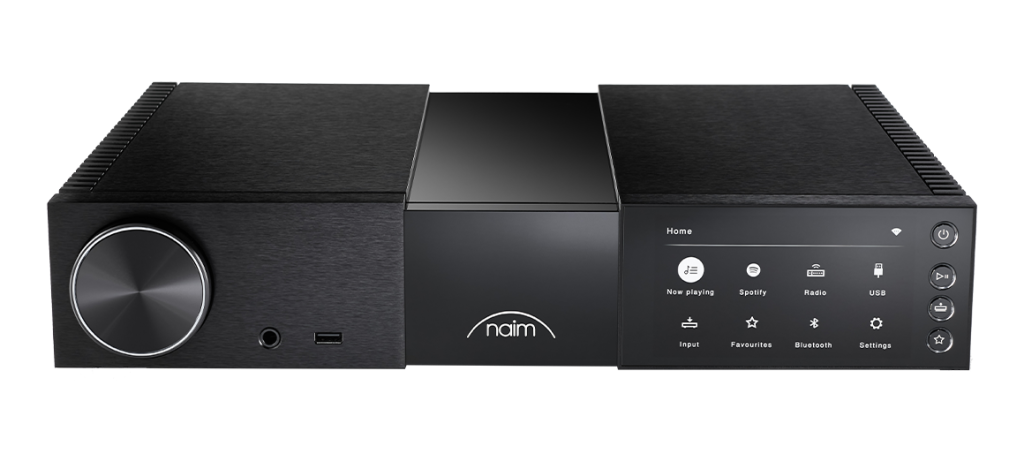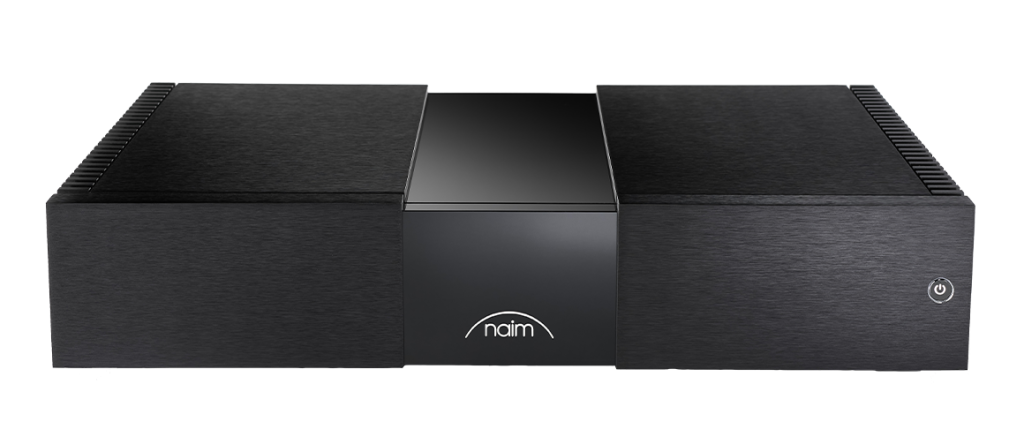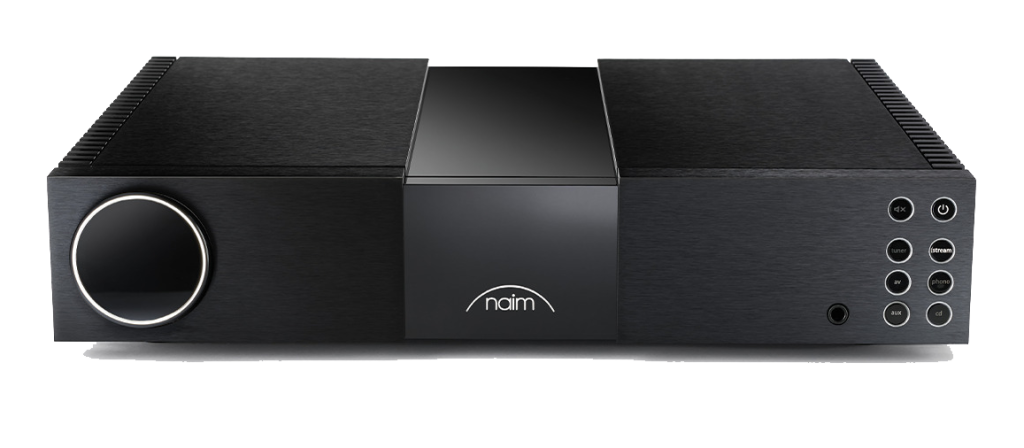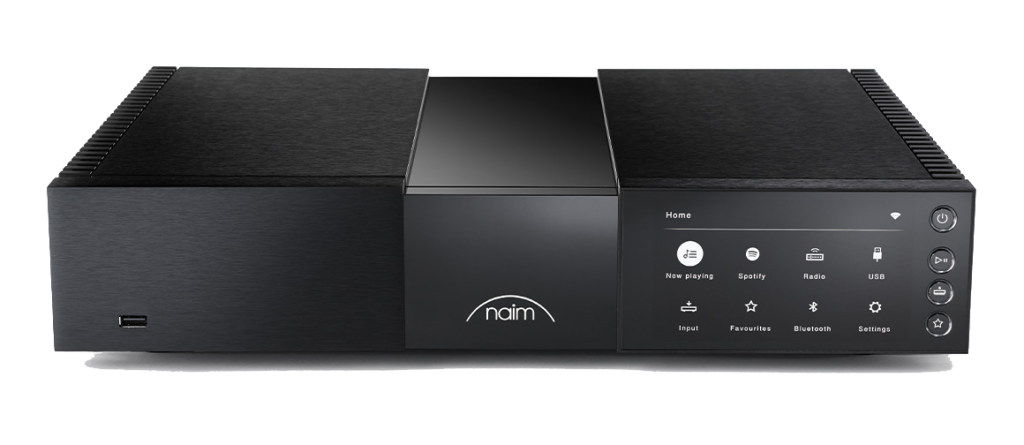Some years ago, on a web site very much of our own making, we had a series of pages giving our rough guide to Naim components. With the high level of initial bafflement when we took on the brand still fresh in our minds, we figured that some explanation could help.
Back then, Naim’s range had evolved from the previous ‘olive’ series with most items being functionally replicated around the turn of the century in what came to be known as the Classic series.
Small factoid: the name Classic was really a riposte to Linn’s then new, Classik all in one system. “Gentlemen, this is Naim’s Classic”.
Back then, whilst just about any preamplifier could be connected to just about any power amp, there were sonic incompatibilities that made it more productive to elevate the grade of preamp before going too far with the power amplifier. Explaining the pitfalls felt very worthwhile.
There were various power supplies. Some, like the PSC, were essential for physical operation but not actually in the signal path whilst others (flatcap, hi-cap, supercap) were emphatically about sound quality. Paradoxically, whilst the 202 preamp could be used without a PSC and could even be powered via the matching NAP 200 power amp, but adding a PSC brought the best value sonic upgrade because it took the strain and noise away from other power feeds.
In the late 2000s, network music players started arriving on the scene. First was the HDX player / server and then, in 2009 the Uniti all in one system. After the NDX streamer launched in 2011 there was pressure for a halfway house, better than Uniti, streamer pre that could use Naim power amplifiers more effectively.
A streaming preamp called NAC-N 172XS came along in 2014. It sounded fine as a streamer with a volume control and, quite curiously, it worked well with even a NAP 300 power amp. On the other hand, the preamp section when used in isolation came some way below the already aging NAC 122, let alone the later NAC 152XS. It was one of Naim’s few mis-steps or, as was wryly said at the time, just ‘a minor success’.
A year or so later, the NAC-N 272 came along. We really liked it and I remember commenting that it seemed to have a new, much fresher, Naim ‘voice’. There was the ability to upgrade via an XPS power supply, utilising the chunky ‘Burndy’ cables. Either way, the audio connection was always made directly to the power amplifier, making this the first Naim preamp not to route audio through the power supplies.
As with 172, but far, far better, the 272 was also remarkably ambivalent about power amplifier choice. Mind you, the NAP500DR did feel like a step too far. From NAP 155 to NAP 300, though, it just worked.
Sales of the 272 really took off and many remain in use in systems far above their theoretical station, for example, running into NAP 300DRs, connected with Super-lumina and powered by XPS DR or even the expensive NAPS555 DR supply.
The one blot on the 272’s world was that it arrived towards the end of the first generation of streamers and became out of date far sooner than felt entirely reasonable.
Roll forward to September 2022 and Andy and yours truly are in Salisbury talking to designer Steve Sells about the new 200 and 300 series. As director of Electronics, Steve was closely involved in the design of the 272. I was a little surprised when he said that he felt that one of its weakness’s was the preamp section. Quite a kick in the teeth for something that had been seen as some sort of second coming in so many Naim forum posts!
Whatever the viewpoint, the 272 became history a year or two ago and its replacement, the NSC 222 steps forward quite decisively. Functionally, the 222 is broadly similar to the 272 in that it packages a high quality network player and preamp into a single component.
Functionally, the 222 is broadly similar to the 272 in that it packages a high quality network player and preamp into a single component.
All aspects have been improved, though. For a start, the streamer is the better sounding’next gen’ version with the benefit of access to Tidal Connect and Qobuz. As with all other newer components, updates can be made over the internet via the control ‘app’.
Huge efforts have been made with the analogue preamp, including the use of a ladder resistor for volume control that uses the same technique as in Statement to smooth away the steps when adjusting level. There is also an excellent internal moving magnet phono stage. Moving Coil would have been too vulnerable to transformer noise, we gather.
Full system automation is accomplished via an optical link to the power amplifier and, when an external power supply is in place, via sensing through the Burndy links. All new components have the capacity to step into ultra-low current sleep mode yet be fired up via a command on either the system handset or control ‘app’.
As mentioned above, the old 272 was already a step away from other Naim preamplifiers in that it could utilise an XPS power supply rather than HiCap or Supercap. NSC222 follows a similar path but has XLR and RCA audio outputs rather than DIN. The upgrade power supply connection is via twin Burndy connectors, one digital and the other analogue.
Cables are available to allow for virtually every permutation of connection between old and new Naim components, so you can use an XPS DR with the 222 or a new NPX 300 supply with a 272 or NDX2. Our one and only exposure to using a legacy XPS DR with the 222 brought the unexpected result that the 222 was preferred powered under its own in-built supply.
Time to talk about NPX 300 🙂

Adding the NPX 300, Naim’s new power supply for streamers, preamplifier to the 222, brings a significant uplift in scale, dynamics, resolution and musicality. Priced at the same level as the NSC222, it’s not cheap but it’s disarmingly effective. In the instance referenced above, the NPX 300 was a complete ‘no brainer’.
The matching power amplifier from the new range is visually identical to the NPX 300. The new classic NAP 250 costs less than the old NAP300DR but runs it very close sonically. It’s well ahead of the NAP250DR in all the familiar ways: scale, resolution and control.

Weave in the undoubted synergy that New Classic components have, and this makes for a cracking system.
As of late summer 2023, we now have the new 300 series too.
Where once there were three preamplifiers in the Classic range, there is now just one : the NAC 332. For the first time, this is a dedicated analogue Naim preamplifier with a built-in power supply.

Compromised? Not a bit of it. Priced at £7900, it’s not so very much more than a NAC 282 with PSC and HiCapDR. It’s quite a bit better, too, with a more 3d presentation, a more neutral tonal balance but just as much brio and engagement. These old ’round earth’ qualities have never been completely absent from Naim components but they are far more evident now than before.
NAC332 is clever too. In a full system, the input selection is shown on the display window of the matching NSS333 streamer. A marker on the volume dial on the preamp shows level and the input selection buttons have tell-tale illumination. The volume dial also shows input socket mapping and comes into play when setting up AV bypass for integration with an AV processor.
Add the NPX 300 and this thing really changes gear. We have done a few demonstrations against NAC 252 / Supercap DR combos and the NAC 332 is clearly ahead by some margin.

The cynic in me half expected the new NSS333 network player to simply be a re-cased NDX2 with increased functionality. In reality, it is a very significant step above the NDX2. A recent demonstration of the two streamers in a ‘bare’ situation with no external power supplies brought this home very clearly.
This is a very serious, and very musical streaming source. Add an NPX 300 and real magic happens! The streaming functionality is all that you would already expect (local network access, Qobuz, Tidal Connect, even Spotify if you must).
Utilising ZigBee wireless link, the preamp communicates with the streamer without any electrical connection. Historically, system automation was via an electrical link and you could hear a small but significant degradation to the audio when it was connected. The control app for the streamer can then take charge of the preamplifier and, with optical links in place to the power amplification, the whole system is under a single point of control.
The audio output is via 5 pin DIN, RCA or XLR connectors. Interestingly, the streamer ships with a standard Naim DIN lead. With our love of Super-lumina cables and a limited number of XLR ones to hand, we’ve used the DIN almost exclusively. Writing this remind me that we need to compare to the XLR.
Finally, to the new twin mono NAP 350 power amplifiers. Two more identical boxes to the NPX 300 and NAP 250:

These really are the business! Every bit as valid with NSC 222 as NAC 332 and certainly compatible with an older NAC252 (with the right leads).
There is always a strong argument for prioritising the front end of the system but nothing seems complicated any more : Across all components, the gains are a more relaxed clarity, better dynamics and increasingly wide and deep soundstages as you rise through the range.
On the face of it, Naim have simply started doing the same as everyone else, what with balanced connections and all that. True to form, though, there is a slight twist. Read Steve Sells’ Mini White Paper about how the balanced is not actually balanced at all. Enigmatic to the last!
Alastair@signals
